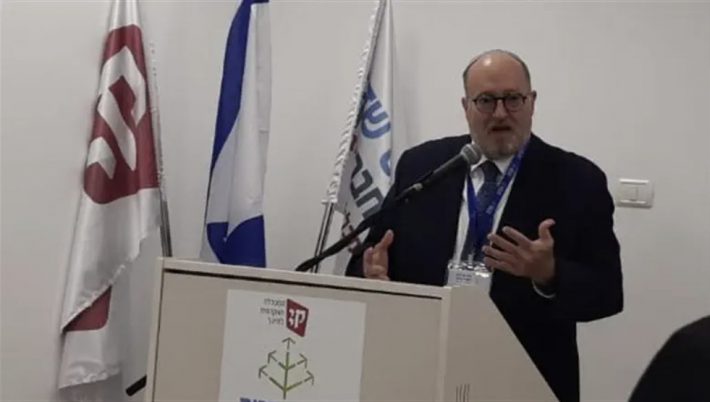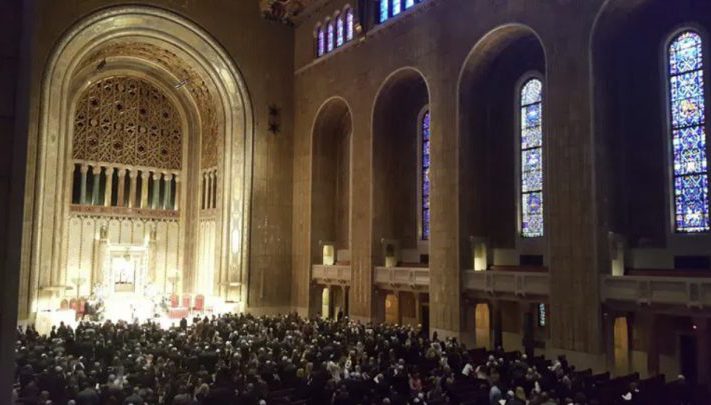A powerful reflection on how the evolving tradition of haftarot readings—born from exile and loss—has become a unifying spiritual language between Jews in Israel and the Diaspora.
By Rabbi Dr. Kenneth Brander | President and Rosh HaYeshiva, Ohr Torah Stone
The tradition of reading a weekly haftarah—passages from the Prophets following the Torah reading—originated during times of persecution when Jews were banned from publicly reading the Torah itself. As explained by Rabbi David Abudraham, haftarot were carefully selected to reflect the central themes of the weekly parsha, ensuring continuity of spiritual teaching despite oppression.
Yet, for a twelve-week span beginning now, we diverge from this alignment. In the lead-up to Tisha Be’av, the fast commemorating the destruction of the Beit Hamikdash (Holy Temple) and the exile from Israel, we read three haftarot of rebuke. Following the fast, seven haftarot of comfort—the Sheva Denechamta—offer hope and healing. This progression culminates with two haftarot on teshuva (repentance) as the High Holidays approach.
This structure—3 of rebuke, 7 of consolation, and 2 of repentance—forms a sacred arc from sorrow to spiritual renewal. But how did this become standardized?
📜 Maimonides and the Haftarah Discrepancy
While today’s haftarot for the Three Weeks and the Seven Weeks of Consolation are widely accepted, a fascinating tension appears in the writings of Maimonides. In his Mishneh Torah (Sefer Ahava), he provides a comprehensive list of weekly haftarot—but surprisingly, makes no mention of these special seasonal readings. His list connects only to the parsha themes.
Yet in Hilchot Tefillah (13:19), Maimonides acknowledges a widespread custom:
“It is the custom of the people (nahagu ha’am) during the three Sabbaths before Tisha Be’av to read haftarot of rebuke… and from Tisha Be’av until Rosh Hashanah, comforting prophecies from Isaiah…”
Why this contradiction?
The key lies in the phrase nahagu ha’am—“it is the custom of the people.” This reflects a grassroots evolution in religious practice. While diaspora communities once followed only parsha-themed haftarot, over time, they adopted Israel’s more seasonally responsive readings, aligning their spiritual rhythm with the heartbreak and hope of their brethren in the Land of Israel.
🌍 A Modern Reflection of Unity
This ancient phenomenon mirrors the growing connection between Jews in Israel and the Diaspora today. In an era marked by rising antisemitism, political instability, and regional conflict, we find ourselves bound closer together—not just by faith, but by shared experience.
Here in Israel, whether one is Haredi, secular, or Religious Zionist, we face the same existential threats and rejoice in the same national triumphs. Jewish identity in Israel permeates public life—from language and law to the calendar itself—adding layers of meaning and community that are hard to replicate in the Diaspora.
But the emotional and spiritual currents of Israeli Jewish life are beginning to flow outward—just as the haftarot of mourning and hope once did. Jewish communities abroad, though diverse and dynamic, increasingly draw strength from Israel’s example and resilience, allowing Israeli themes and values to enrich their local realities.
🔄 From Distance to Dialogue
The structure of these special haftarot tells a deeper story. We begin with three weeks of painful introspection, acknowledging our vulnerabilities and losses. Then come seven weeks of uplift—verses brimming with divine compassion and national renewal. Finally, we embrace the call to return—personally and collectively—with the High Holiday haftarot of repentance.
This movement mirrors our historical journey—and our modern one. As Maimonides subtly recorded, a transformation occurred when Diaspora Jews internalized the sorrow of Israel’s loss as their own. Today, our responsibility is to foster that same sense of collective destiny, in both directions.
The ongoing exchange of spiritual insight and cultural experience strengthens our bond as a people. The words nahagu ha’am challenge us not only to preserve tradition—but to evolve it with love, solidarity, and purpose.





